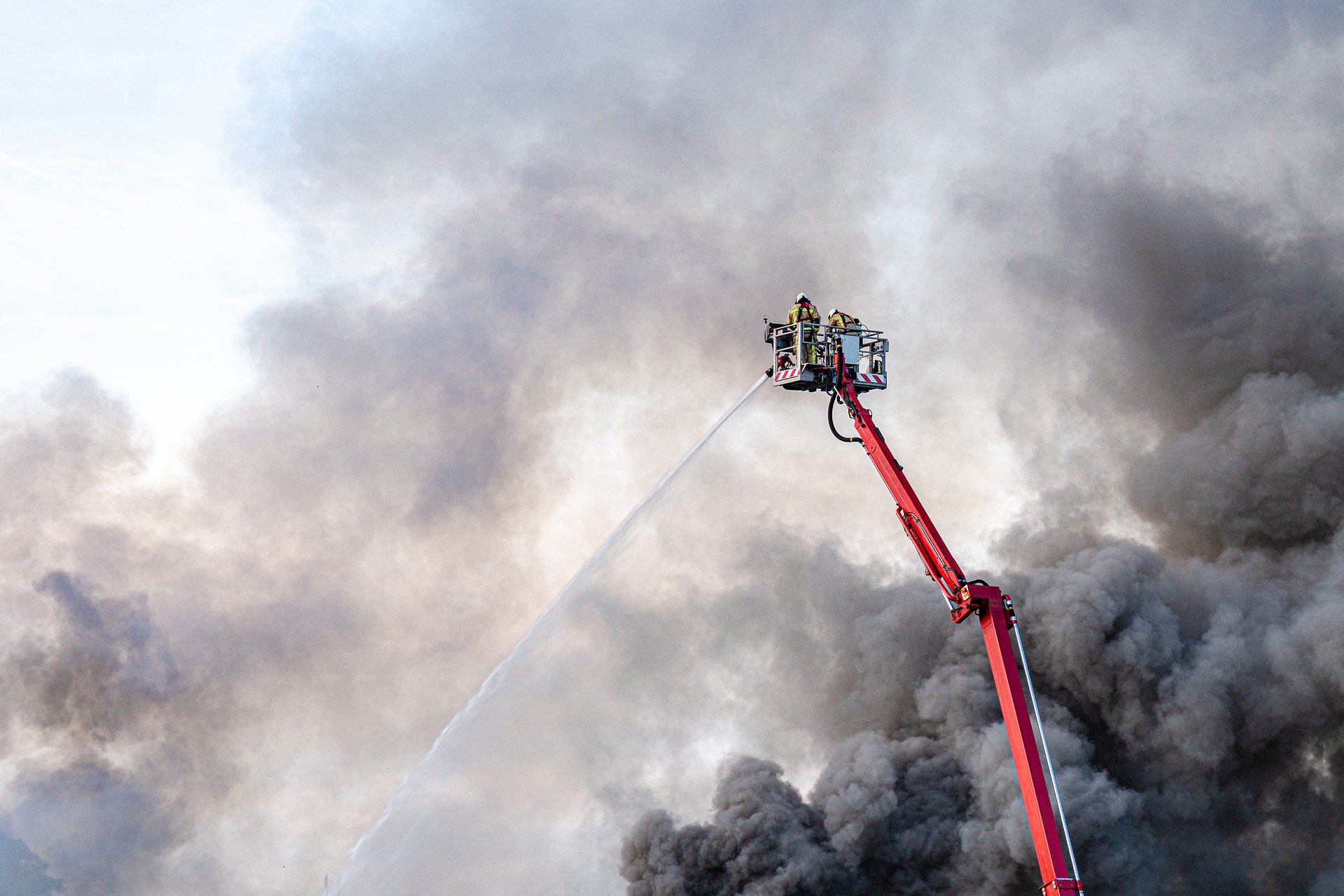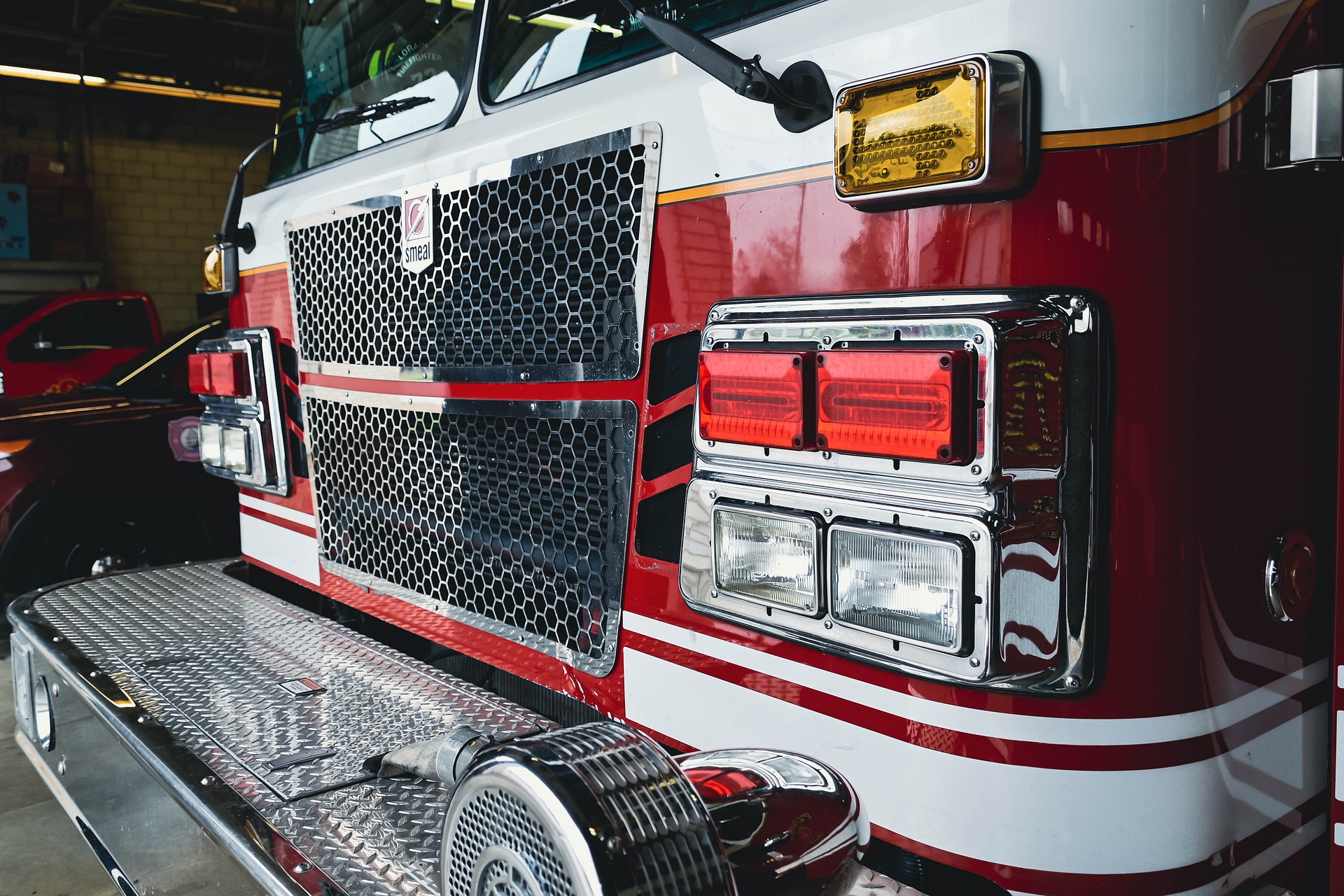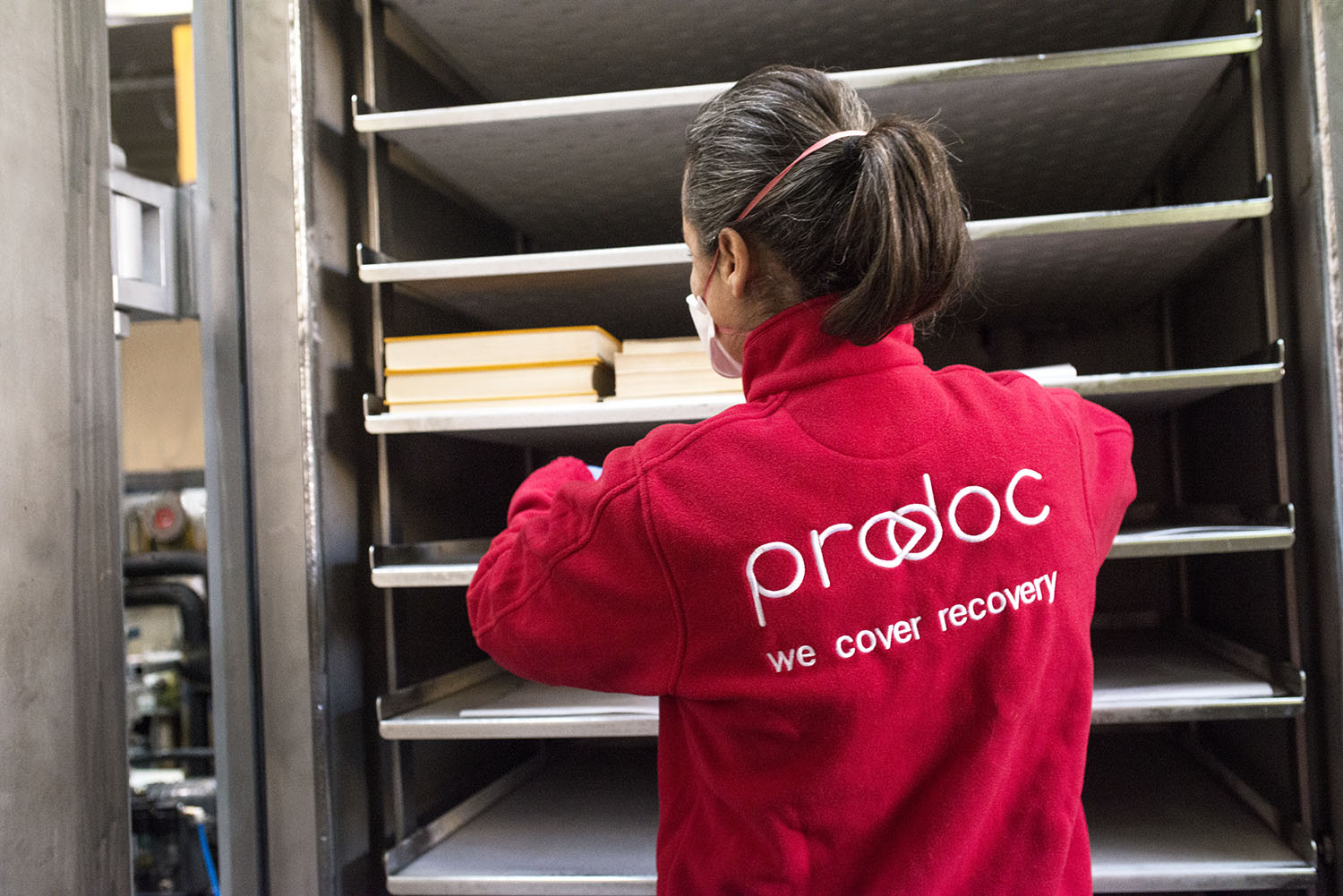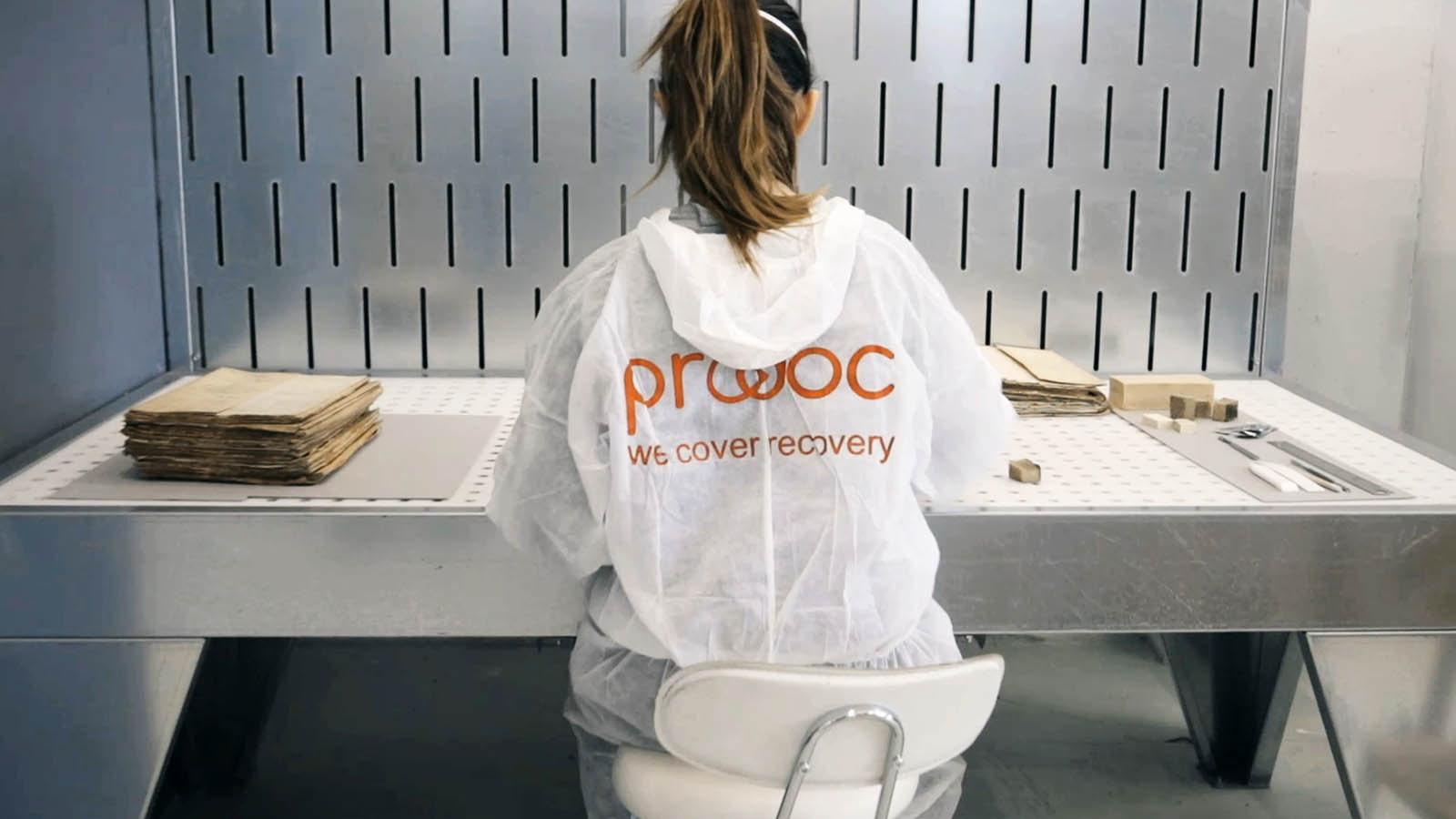Prodoc is a competent company for the management of emergencies involving archives and libraries, and can provide real and concrete support for securing damaged material and for saving it.
Prodoc can also count on the support of the experience and machinery of the EDAM company to promptly manage any type of emergency within archives storage rooms, and on the expertise and support of the SOS Archives Association, founded in 2009 to bring together experts in the sector and create a collaboration network capable of guaranteeing greater protection and safeguarding of the archives present on the national territory.
The phases of intervention in case of emergency:
The work process during an emergency

First phase: the alarm
The policyholder has a series of obligations in the event of an accident that he must necessarily comply with in order to obtain compensation for damage: in particular, article 1914 of the Civil Code provides for the obligation to rescue and reduce damage to insured properties. For this reason, the policyholder has the right to contact, following an accident, a company that supports him during the implementation of the procedures for saving the insured items: the work performed for the reduction of an insurable damage shall be borne by the Company. It is possible, however, that the contractor decides to proceed with the safety measures without relying on the professional services of a competent company: during the damage assessment phase, it will be up to the expert to decide whether or not to contact this type of companies to ensure greater protection of the insured assets. In both cases, however, a company with a rehabilitation function such as Prodoc acts in this context exclusively with the aim of securing the damaged goods and avoiding the aggravation of the damage.
The emergency response team of Prodoc works in close collaboration with the emergency teams of the Fire Brigade and Civil Protection, which are obliged to establish, prior to the intervention of any company, the viability of the building in which the damage occurred and the danger to people ceased. It is essential for the injured party to take steps to communicate the type and extent of the damage that occurred in a precise and meticulous manner to the restoration companies consulted, to allow them to prepare the emergency teams and the appropriate emergency equipment.

Second phase: securing
On the site of the accident, all the procedures useful to secure the damaged goods and to avoid any worsening of the damage occurring on them will be implemented.
In the ICCROM Handbook, the International Centre for the Study of the Preservation and Restoration of Cultural Property, written by Aparna Tandon entitled First aid to Cultural Heritage in times of crisis (2018), the procedures for securing in case emergency are defined: “The immediate and interdependent actions taken to stabilize and reduce risks to endangered cultural heritage during and after an emergency are collectively defined as cultural heritage first aid. The immediate cause of such an emergency may be a natural or man-made hazard, or a combination of both. First aid includes the analysis of an emergency situation and its likely effects on cultural heritage; on-site damage and risk assessment; and security and stabilization.” The guide also proposes a framework for identifying the fundamental phases to be implemented in the event of an emergency: in order to achieve a positive outcome of the various operations carried out, however, the guidelines suggested by the manual must be based on a knowledge of the building and a solid and organized awareness of risks and their prevention.
To ensure the effectiveness of the safety measures, it is in fact necessary that a conservation institute has prepared all the operations necessary for the correct safeguarding of the heritage and has worked to draw up an Emergency Plan containing the description of all the activities to be implemented in the event of an emergency and the description of the material that must have a priority for saving.
1. Analysis of the emergency situation
The first phase identified by the Handbook in the management of an emergency is the analysis of the accident situation, which consists in acquiring awareness of the damage occurred, the extent of the material involved and the specific context in which the rescue procedures must be carried out.
This operation allows the rescue teams to understand the characteristics of the event and to prepare a complete and specific action plan for the institution in question.
During this phase it is necessary to combine a short-term evaluation mainly oriented to the rescue as sudden as possible of the assets in danger, a thought based on a long-term vision, which allows to prepare the material for the emergency procedures.
2. Damage assessment
The second phase to be implemented is the assessment of the damage, which must be carried out directly on the site of the accident: during this procedure it is necessary to try to reconstruct the context in which the event took place. The main objective of this phase is to build a priority scale in the various tasks to be implemented for the protection of the material.
3. Security operations
The third and last phase consists of the safety and risk stabilization operations, which include all the concrete actions aimed at limiting the damage and reducing the dangerousness of the situation.

Third phase: preparation for recovery
It is essential to remember, however, that it is not automatically certain that the Company will compensate the expenses incurred for this kind of additional services: all the restoration operations of the damaged material, useful for bringing it back to the condition in which it was before the accident, if carried out to repair an actually insurable damage, are compensated by the insurance company.
When the insurance company, after agreement with the expert, must choose the company in charge of reconditioning the material, it often resorts to the publication of a tender, to select the company that, parity of service, offers a lower price than all others. For this reason, all services that go beyond the simple operations of securing, in order to be compensated, must be approved by the insurance company and by the expert in charge of handling the case.
Prodoc offers a series of services for restoring damaged goods, or for preparing them for subsequent processing in its own laboratory.
In the event that the portion of the damaged goods is small and the material is in an acceptable state of conservation and therefore only needs to carry out some cleaning and leveling procedures, it is always preferable to carry out the restoration operations directly on the site of the accident, to avoid subjecting the goods to further mechanical and physical stress and further risks from transport.
If, on the other hand, the restoration operations to be carried out on the material are of considerable entity, both due to the large amount of goods involved and the specificity of the instrumentation necessary for the various procedures, Prodoc offers a useful service for the preparation of the material to a subsequent processing phase at its laboratory in Gallarate.
The operation that the company most commonly implements for this purpose is that relating to the preparation of the material affected by wetting for the subsequent drying procedure to be carried out with freeze-drying.
To ensure a correct drying procedure, the goods are separated from each other and packed inside special bags, to which labels are applied that show the positioning of the single document within the collection.
The material thus divided is then frozen: in their own laboratory, the Prodoc restorers will be able to insert a portion of material at a time inside the freeze dryer.

Fourth phase: restoration and replacement of storage materials
The company employs expert restorers, archivists and all the professional skills necessary for the completion of the restoration and restoration of the material and the preparation for its subsequent relocation within suitable storage rooms.
In order to guarantee the best possible protection for the insured goods, it is necessary to act promptly in the hours immediately following a claim.
A company with the specific function of restoring the buildings in which an accident has occurred and of securing the assets contained within them, must be put in the condition of being able to act as quickly as possible by involving the staff and providing the appropriate equipment for the situation.
For this reason, many insurance companies are taking steps to establish lasting partnerships with emergency management companies that allow the latter to take prompt action in the event of a claim.
The main Italian insurance companies enter into agreements with the recovery companies for the management of emergencies and for customer assistance in the event of a claim: the contacts of the recovery company are entered directly into the policy document, in order to make it easier for the contractor to activate emergency procedures.
Furthermore, this procedure allows companies that have to deal with safety measures to already know in advance the characteristics of the insured goods and thus to prepare the equipment and personnel suitable for their handling.
In the specific sector of works of art and cultural heritage, the virtuous collaboration between an insurance company and a company that deals with rehabilitation allows us to guarantee greater protection for the insured assets and to significantly reduce the possible damage to property insured in the hours following the accident.





